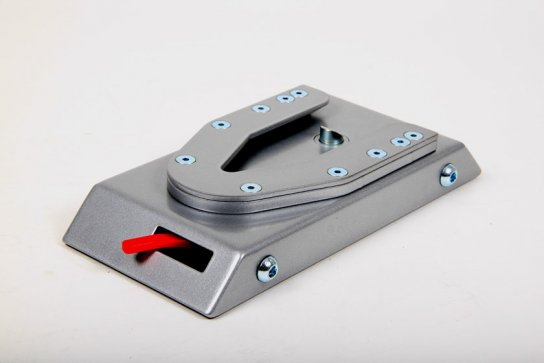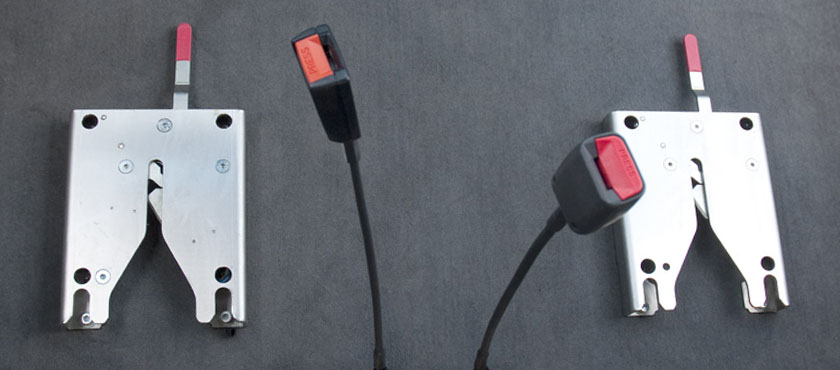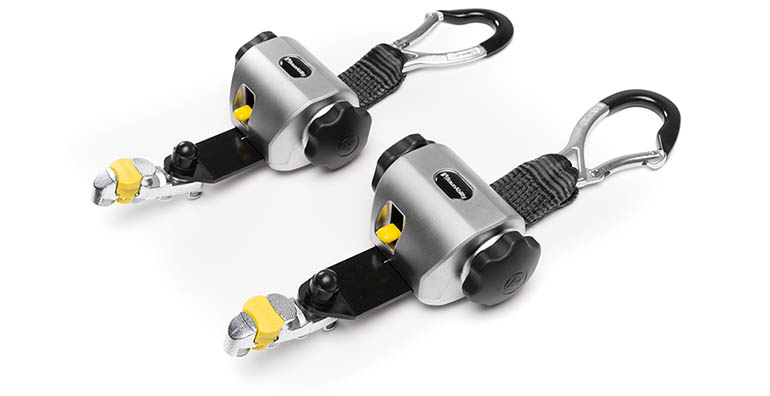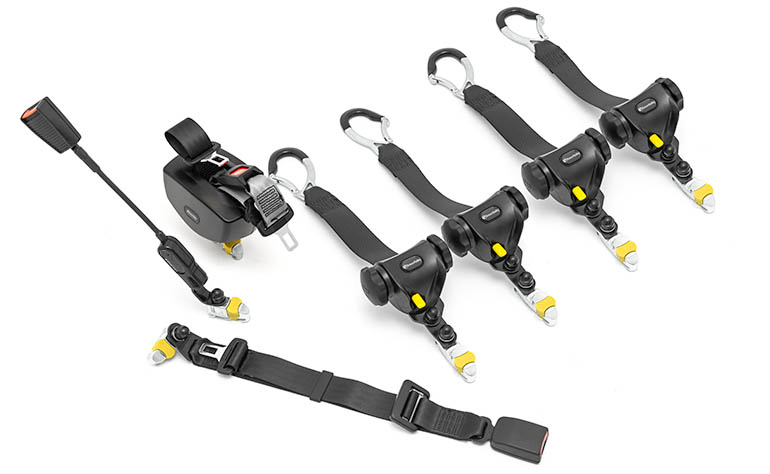Wheelchair restraining systems
Revolutionary Docking System will set new standards for flexibility and safety!
Dahl Engineering’s newly developed electric Docking System provides a previously unseen flexibility and safety for wheelchair users. The Docking System is the first system on the market to be tested and TÜV certified in accordance with EU safety requirements for cars (M1) with an electric wheelchair which has a weight of 150 kg and integrated lap belt. In testing, the docking station has proved to be so strong that it can withstand a load corresponding to a wheelchair weight of more than 200 kg + passenger provided that the safety belt is installed in the traditional manner in the floor of the vehicle.
The wheelchair docking system is commonly used in Drive from Wheelchair Cars but is also very popular for passengers travelling in their wheelchairs as it allows the user to be secured into the car safely and swiftly with no stress, the system is easily operated by a one button release from the front and rear of the car.

For further information on the Dahl Docking Station please download the brochure here or contact Mobility Engineering and speak with one of our friendly staff members.
The wheelchair docking plate AKE 04 allows both manual and electric wheelchairs to be secured to the car floor, for those who want to drive from their own wheelchair and for those who want to be passengers.
The wheelchair docking plate AKE 04 is available both in electric and manual models.
In the electric version, the chair is docked automatically and released by pushing a button located in a convenient position for the user, usually on the dashboard. The plate is equipped with a safety system which warns the user with a beep in the event of wrong docking and with a lever for manual release in case of emergency.

In the manual version, instead, releasing is done by a lever located on the plate.
The wheelchair docking plate AKE 04 is CE-marked, crash tested, meets the Directive ISO 10542-1, and, in the electrical version, also EMC tested. This product has a 3 year warranty from invoice date.
If you would like to download the brochure for the Kivi Docking Station click here or you can call and ask for one of our friendly staff.
Safely transporting a wheelchair in a vehicle requires four tie-downs, two in the front and two in the rear. Additionally, any person seated in the wheelchair will need a 3 point seat belt. Anything less just isn't safe.

A brief introduction to WTORS
Wheelchair tie-down and occupant restraint system
A wheelchair is secured by using four tie-downs. Two in the front and two in the back. These can be webbing straps or retractors. For the front tie-downs, you also have the option of electric reels.
Each tie-down (2) is then attached to the wheelchair using wheelchair fixing (3), either a strap with tongue and buckle, a hook or a karabiner.
Each tie-down (2) is also attached to the vehicle floor using a floor fitting (1), either via a solo anchor, in a rail or directly bolted to the floor.
The occupant belt (4) consists of a shoulder belt and a lap belt. The occupant belt can share the floor fitting with one of the rear tie-downs or have its own. A shoulder belt does, however, require the attachment of the upper anchorage (or 3rd point) in the vehicle, this is usually in the form of a piece of rail known as a cant rail.
Step 1: Floor attachment
How to attach restraints to the vehicle floor.
Step 2: Type of tie-down
Choose the type of tie-down.
Step 3: Wheelchair attachment
How to attach the tie-down to the wheelchair.
Step 4: Occupant belt
How to secure the passenger.

